If you’re travelling to Rome in the summer, then you’ll need to be prepared to withstand some very high temperatures. However, the sights in the city will more than make up for the heat. Plus, the best thing about the summer season is that you can always take a break from the city and head to the coast. There are plenty of beaches close by. The nearest one is Ostia. At only a little over thirty kilometres from the city, it’s where the locals tend to go. However, there are lots of other places you can visit in the area, too.
The Lazio coast is flat and the beaches are sandy. Indeed, the coastline is dotted with beaches and villages where you can spend a truly splendid day out. You’ll probably really feel like taking a dip during the hot summer days, so head to Gaeta, Sperlonga, Sabaudia or the Pontine Islands. They are all lovely places and great to visit at any time of the year. That way, you can bring a bit of variety into your holiday in the Eternal City.
Ostia beach: the closest beach to Rome
-
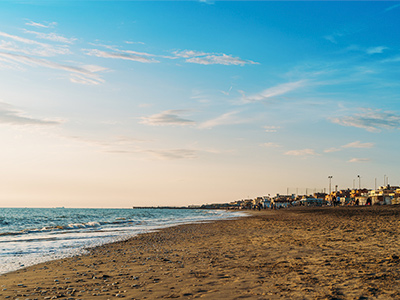
Lido beach in Ostia On summer weekends, Rome is left to the tourists. Any Romans still around in the city head to Ostia. This small town at the mouth of the Tiber River has an esplanade and a beach. Centuries ago, it was a major trading port and, during Mussolini’s time, a small town – Lido di Ostia – started to expand in the area around the beach. A road was built to link the city to the coast and Ostia became known as the Rome’s beach.
It is not the prettiest of all the beaches in Italy but the surrounding area is really worth seeing. Romans flock to this busy holiday spot with attractive villas by car and on public transport. It has also become somewhat of a cult location for literature and cinema-lovers. Pier Paolo Pasolini was murdered on Ostia beach in 1975. The well-known writer and filmmaker had used the area as the setting for some of his novels.
Gaeta: a string of pretty Mediterranean beaches
If you head south from Rome, you will reach Gaeta. It’s on the border to the province of Campania, around two-and-a-half hours from the capital city. You will find its narrow streets, terrace restaurants and seven beautiful beaches absolutely delightful. They all have fine, golden sand, crystal-clear water and standard Mediterranean vegetation.
Serapo, the main beach, is next to Monte Orlando on the southern side. This is where you will find Montagna Spacata sanctuary. This beach is the closest one to the town, which also means it is the busiest. It’s ideal for families because the water is crystal clear and there are large number of beach huts.
-
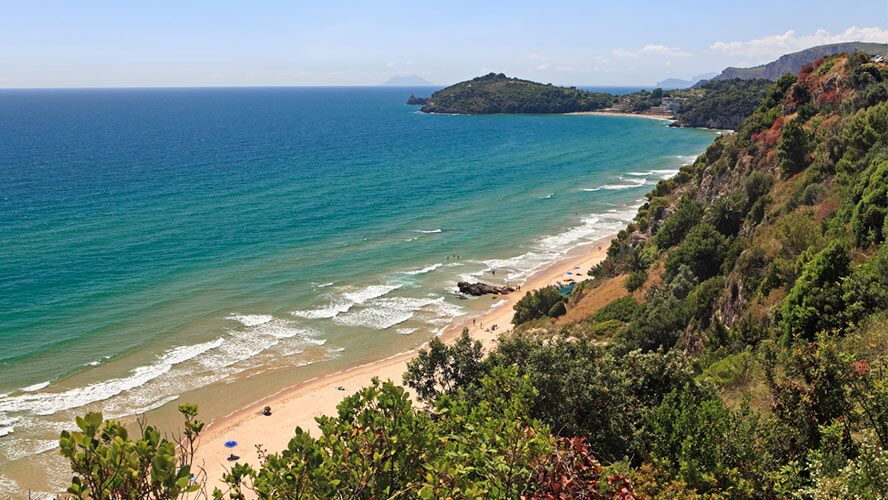
Gaeta Beach´s breathtaking sorroundings
Fontania is a great deal smaller and very close by. In fact, you can reach it on foot or you can even swim to it. Spiaggia dei 40 Remi is another beach that you can reach by boat. Next, a bit further from the town, you have Ariana and Arenauta. The latter has to be accessed down a flight of 300 steps. If you do make the effort to go down them, though, you will find one of the few areas of the Lazio coastline that remains untouched.
You also have San Vito beach. It is revered by divers because of its caves and spectacular seabed. And you’ll still have Sant’Agostino bay left to try out. It is the longest and busiest of them all. It has public and private sections and is popular with climbers who love to practise their skills along the large cliff wall.
Sperlonga: the paradise of the Tiber
It takes just over one hour to get to Sperlonga (province of Latina) from the capital city. It has a number of beaches (Angolo, Canzatora, Fontana, Bonifica, Salette and Bambola) and it is awarded a blue flag year after year. Fine sands and calm seas are its main features. Local families adore it. The old quarter is known as one of the most beautiful old quarters in Italy and it is positioned on a rocky outcrop that reaches out over the sea. The view you get of it from the beach is amazing.
-
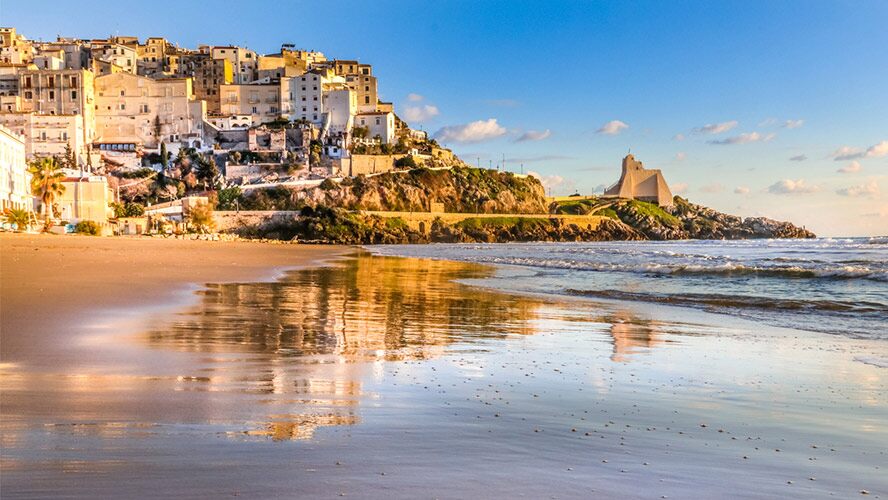
The village of Sperlonga near the sea
The warm climate in Sperlonga and the pretty landscapes attracted the leaders of the Republic to the area. Emperor Tiber built a splendid villa for the summer there. His villa stretched out over 300 metres of beach. Remains still exist of the baths and his private port.
They even excavated a huge swimming pool that had been dug out in a thirty-three-metre deep cavern known as Tiber cave. It might be lovely to take a dip in the sea and step away from the monuments in Rome for a moment, but the past is never far away.
Terracina: sea and fun
Terracina is in Ausoni mountain range, about 100 kilometres from Rome. It’s a perfect place if you’re looking for a bit of relaxation without missing out on any of the fun. There is a great deal of nightlife in and around the long beach, which boasts crystal-clear water and golden sand. This is why it is one of the favourites among young Italian people.
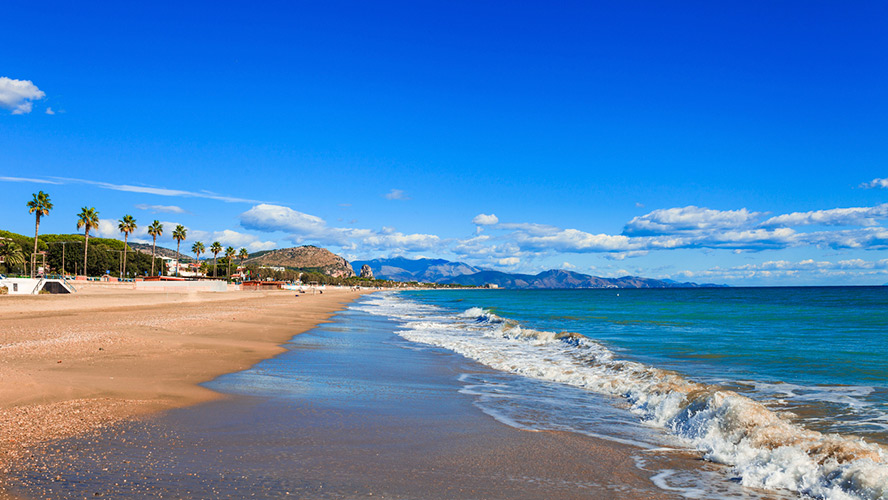
There are also aspects of this part of Lazio that captivate visitors. For example, the ruins of the temple of Jupiter Anxur on the summit of Mount San’t Angelo which dates back to the 2nd century AD. It is the perfect place to enjoy the city, the canals, the port and the coastline all the way to Gaeta.
Sabaudia: pure luxury
Sabaudia is a strip of land between the sea and the lakes. It is part of Circeo National Park. The headland, which reaches out over the crystal-clear waters, is its most striking feature. Sabaudia beach is a favourite among high-class Italians. They go there to relax in a privileged and exclusive environment. It is fifteen kilometres long and it has Mediterranean vegetation, crystal-clear waters and splendid dunes.
Plus, you have the dense and rejuvenating vegetation of Circeo. You can access the beach from wooden walkways dotted all along the coast. There are a number of luxury villas and private beaches in the area. The train from Rome doesn’t actually go all the way there so the beach does not tend to be too crowded.
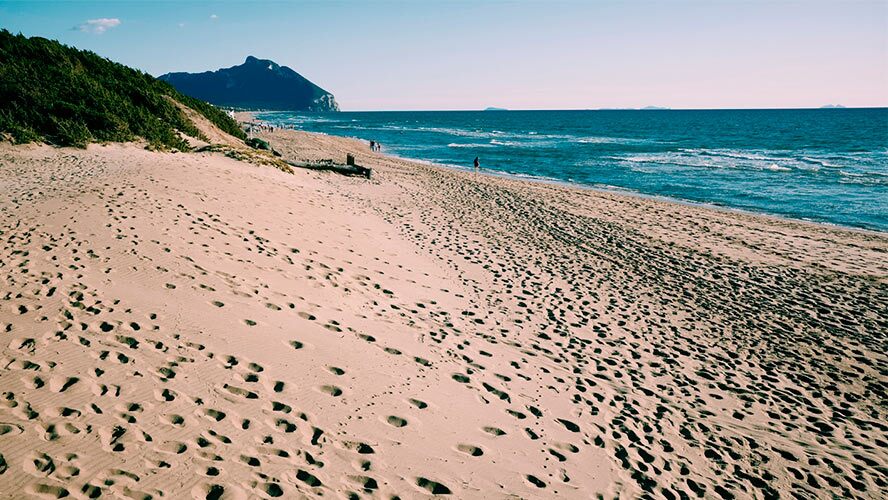
Ventotene: a small, dreamlike island
Ventotene is part of the Pontine Islands. It is small but incredibly beautiful. It is under two square kilometres in size and the land is protected. There are paradisiacal beaches such as Cala Nave along the virgin coastline. Its features include dark, volcanic sand and lush green vegetation.
It is a perfect place to do some diving or snorkelling since there are a number of caves and the water is transparent. There are two ports. The oldest one is Porto Romano, carved out of the volcanic rock that is common in the area. All around, you’ll also see the typical colourful houses of Ventotene. The most recent port – Porto Nuovo – is where the ferries and larger boats run to and from.
-
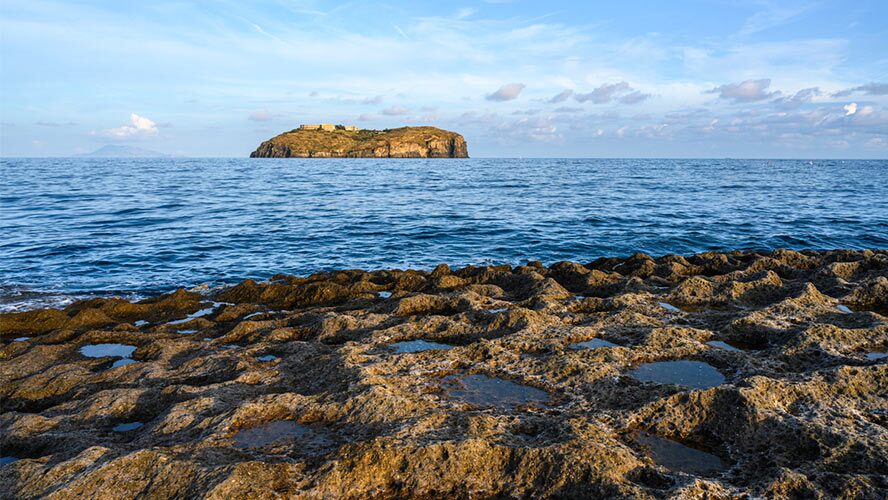
Volcanic landscape in the coast of Ventotene























































